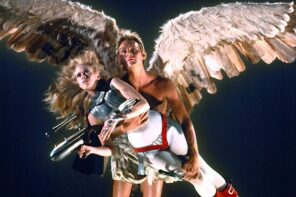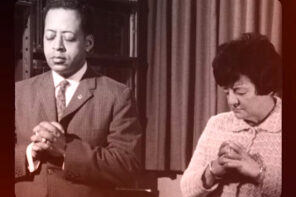Last week, media reported on a psychological study suggesting that white people are predisposed to ascribe superhuman and magical qualities to black people. Spike Lee famously described the trope of the “Magical Negro,” found in films like The Green Mile, but this study is the first attempt to analyze “superhumanization bias” empirically. It may also have implications for religious studies since historians of religion have noted that the way we imagine the religious other overlaps closely with racist ideas about witchcraft and “voodoo” as well as forms of “romantic racism” such as the noble savage and the “oriental monk.”
The study consisted of five tests that measured how white subjects associated words or ideas with either black faces or white faces. One test showed that subjects associated the words “ghost,” “paranormal,” “spirit,” “wizard,” “supernatural,” “magic,” and “mystical,” more frequently with black faces. In another test, subjects were shown two faces and forced to answer such questions as: “Which of these people has supernatural quickness that makes them capable of running faster than a fighter jet?” Here too, subjects were more likely to attribute superhuman powers to a black face rather than a white one.
The data don’t prove that white people think blacks are “legit warlocks,” as Gawker’s Hudson Hongo concluded. Three of the five tests had very small sample sizes and most of the subjects were undergraduates participating in an experiment for partial course credit. For researchers, these results are significant because they advance a theory about prejudice; while similar studies of racial bias have attempted to study how other races may be regarded as less than human, there have been virtually no empirical studies of biases that portray the racial other as “superhuman.” This study specifically analyzed white prejudices toward blacks, but it’s likely that many cultures have similar prejudices toward other races.
While it might sound positive, or at least benign, to think of another race as superhuman, researchers suggest that the superhumanization bias carries other consequences. For example, aggressive police responses to black juveniles may seem justified in part because they are believed to have abilities that white juveniles do not. The data also suggest an assumption that superhumans don’t experience pain like the rest of us, perhaps leading to the assumption that they don’t require the same level of care and support.
These findings are significant for religious studies because ideas about the racial other inform the religious imagination. African Studies scholar Adam McGee has argued that “voodoo,” as portrayed in films from The Serpent and the Rainbow to The Princess and the Frog, is an imaginary religion that uses blacks with supernatural powers as an outlet for racist fantasies. In 1996 the idea of superhuman blacks elided into a panic over adolescent “superpredators,” with conservative pundits speaking in apocalyptic tones about how a generation of adolescent gang members born in a state of “moral poverty” was poised to destroy society (which could only be saved by a return to “true religion).
Other races have likewise been “superhumanized” in the American religious imagination. Philip Jenkins has written on how the New Age movement reimagined Native Americans from subhuman savages to superhuman mystics, while Donald Lopez has written on the superhumanization of Tibetans, which goes back at least to the Theosophical movement of the nineteenth century. Jane Iwamura has written on the superhuman abilities ascribed to Asians in shows like Kung Fu.
The real significance of this study is the possibility that these sorts of racial mythologies aren’t simply the purview of historians but can be studied scientifically, which may lead to a more serious conversation about how our fantasies about the mystical Other play out in our society. The first step to countering our racial and cultural prejudices is admitting to ourselves that they exist.




